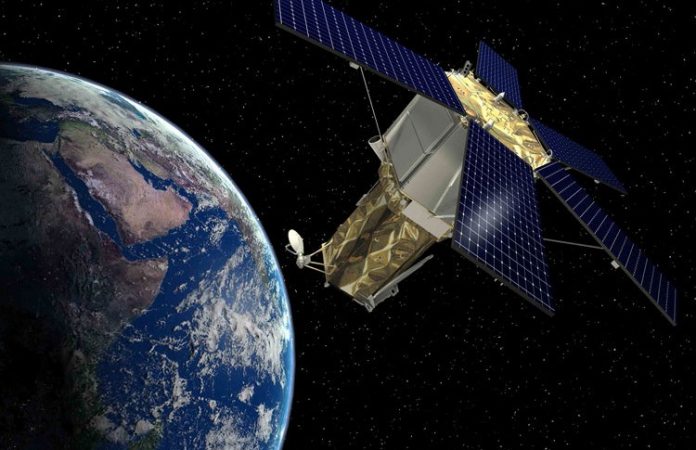This article is written by Shobhna Aggarwal, currently pursuing B.Com LLB from Banasthali Vidyapith.
Table of Contents
Introduction
The technological inventions of the past century have drastically changed the way people and nations interact. The advent of computers and satellites has minimized the importance of political and geographical boundaries in the process of communication. Many forms of communication are thus able to function without legal hindrance. One technology much in international debate in the field of information is that of remote sensing satellites. The development of ‘eyes in the sky’ has raised questions concerning the property rights to the information they collect. This article discusses the critical legal issues regarding the use of the remote sensing technology. Issues like security of nations, military uses and responsibility of the data, equal access and dissemination of data, and the intellectual property rights of remote sensing technology.
The United Nations in 1986 adopted a resolution on Remote Sensing principles of Earth from space. These principles talked about the policy ‘open skies’ in which prior consent of a sensed country is not required for its imaging from space. In the resolution it was included that these activities cannot be conducted to diminish sensed states’ legitimate rights and interests. The aim was to conduct remote sensing activities with the aim of promoting international cooperation, keeping in mind the requirements of developing countries. The principles not being legally binding got the recognition of ‘soft law’. These principles were taken as a basis for several international agreements between sensing states or the data providers and the recipients.
The commercialization of space activities is surely a positive development, it has allowed many countries to take advantage of space technology including satellite communications, remote sensing and other applications for national, economic and social development. It has increased the risks of advanced space technologies being used for aggressive or violent military purposes. Such commercialization may result in high costs of space services with grave consequences for developing countries’ access to their benefits. It presents a bigger challenge to the international community, also the countries with space capabilities, to take appropriate steps to make space services available to all interested countries at affordable prices. In this article we are discussing the challenges faced in remote sensing by the current era.
Equal Access to Data
The equal access principle provides that the sensed state shall have access to the data at reasonable cost and on a non-discriminatory basis. Sensing state cannot discriminate the sensed state with regard to supply of data on grounds of social, economic or technological status. Sensed states can access primary or processed data and analysed data.
National security concerns and foreign policy of a remote sensing state, can also come in the way of the implementation of the ‘equal access principle’. Unilateral statutory controls imposed by some of the remote sensing states on collecting and distributing remotely sensed data will prevent the sensed states from having an access to the secrets of the former category of states. But their military bases, defenses and natural resources are out in the open for everyone to see.[1]
Under the Land Remote Sensing Policy Regulations 2000, the US Government has been given power to exercise control over the operation of a foreign remote sensing satellite and to limit the collection or distribution of its data in the case of launching of a satellite by an American company.
Dissemination of Data
There are four predominant views on dissemination of remote sensing. The first view raises the question of the legality and desirability of remote sensing conducted without the prior consent of the sensed state. The second view accepts the legality of remote sensing but seeks to limit it to situations in which the sensed state is given prior notice or has given consent to the remote sensing activities. The third view accepts the general legality and necessity of remote sensing but seeks to prohibit third parties from receiving data about the resources of the senses state. The fourth view is known as the “open skies” doctrine and permits the dissemination of remotely sensed data to all interested parties, including states, individuals and organizations on a non-discriminatory basis.
Several new developments like war on terror, heightened national security concerns of developing countries emanating from new remote sensing technology, commercialization, globalization and global movement for human rights protection have taken place since the endorsement of the ‘open skies policy’ in 1986.[2] It is, therefore, desirable that these developments along with the disadvantages of open dissemination of the remote sensing data be given due consideration while considering the open dissemination policy.
Responsibility Undertaken for the Data
Remote sensing activities can be carried out by any nation, international organizations or non-governmental entities. Non-governmental entities could also include private-owned ventures. The concerned state or states are under a legal duty to regulate these activities. Nations operating remote sensing satellites or technologies are held responsible for their sensing activities. Such activities are to be conducted in accordance with the principles of remote sensing and of international law.
International responsibility of remote sensing activities and the obligation to ensure their conformity with the above-mentioned principle are regardless of whether the activities are being carried out by the government or non-governmental organizations or through international organizations to which such states are parties.[3]In case of harm or damage resulting from remote sensing from space the rights of compensation to the affected parties are governed by Article VI of the Outer Space Treaty and by the 1972 Liability Convention for Damage. This is elaborated in the Remote Sensing Principles of 1986.[4]
Security And Sovereigntyof Nations
Since the advent of remote sensing technology, the remote sensing activities and their uses have always been seen as a probable threat to the national security and sovereignty of a state. Third world countries argue that gathering of data of their territories without their prior consent, through remote sensing by some states infringes their sovereignty. They consider that sovereignty on resources also extends to information regarding those resources. These countries believe that the data gathered over their territories should be first accessed by them before it is disseminated to other countries. They question the right of the sensing nation to collect data relating to other country.[5]
The legality of information under general law depends upon the nature and location of data, along with the place from where the data is collected. Outer space is the territory which is common for all nations, states, open for peaceful purposes and exploration by them. This rules-out the issue of prior consent, since no nation has restriction over the space powers using remote sensing activities. Unrestricted use of remote sensing technology poses threat to the national security and sovereignty of least developed countries.[6]All these years customary international law has conferred rights on states to operate remote sensing activities and take images of other nations.
There is a need for a change in the views, and the customary international law. Commercialization of remotely sensed data gives higher risk; nations face threat from their own citizens or from other nations. Use of remotely sensed data by wrong people will become dangerous for national security.
Military use of Data
Currently remote sensing imagery is being used for civil and military purposes. The question is whether the military use of remote sensing satellites is legal. Any attempt to answer this question would depend on the compatibility of this activity with the requirements of international law, including the UN Charter and the Outer Space Treaty. In particular, the answer to this question depends on the meaning of the expression ‘peaceful purposes’ which appears in article IV of the Outer Space Treaty. As is well known, the scope of this provision is unclear and scholars are divided in their views in respect of its delineation. For the purpose of this provision calls for consideration of two different issues: what areas of outer space the ‘peaceful purposes’ requirement should apply and what is meant by peaceful purposes.
According to one school of thought the provisions allows states to use certain areas of space for military purposes. In sharp contrast, the second theory holds that all outer space should be used for peaceful purposes. Regarding the meaning of ‘peaceful purpose’ the United States and some of the western countries have consistently held that these terms mean ‘non-aggressive’ rather than non-military purposes.[7] This view has been refuted by the third world countries who hold the view that the term ‘peaceful’ is a synonym of ‘non-military’ and hence all uses of the satellites for military purposes is non-peaceful and therefore in violation of the Outer Space Treaty.
Intellectual property rights and remote sensing data
The increasing privatization and commercialization of space related activities has added new urgency to develop an effective international framework for addressing space related intellectual property issues. Intellectual property rights cover a wide array of private property rights that exist over intangible intellectual creations and intellectual property and include inter alia, rights relating to literary, artistic and scientific works and inventions in all fields of human endeavor.[8] Remote sensing raises complex issues relating to copyright protection in the remote sensing data and patent in remote sensing technology.
So far as protection of research and development in remote sensing satellites and other related equipment is concerned, the Paris Convention for the Protection of Industrial Property may be of some relevance. But neither the main body of current international space law contains any rules expressly dealing with intellectual property rights nor does the TRIPs Agreement seem to have been drafted with the outer space and its applications in mind.It is therefore submitted that intellectual property rights issues relating to remote sensing calls for elaborate regulation.
Suggestions & Conclusion
Remote sensing technology has developed so quickly that it has outpaced current international legal systems thereby raising a wide array of troubling issues regarding its use. In order to address these issues treaties on remote sensing should be made and decided with the support of the United Nations. The proposed treaty should provide a legal framework for rules and regulation of remote sensing internationally. The treaty should be so designed as to safeguard the non-discriminatory and legitimate access to satellite images in all forms of peace-keeping, commercial or civil purposes. Use of remote sensing satellites which are not operating in accordance with the international law should be restricted. It is also imperative that the treaty addresses the operations of reconnaissance satellites, specify the rights and duties of sensing and sensed states and provide solutions to intellectual property rights issues that may arise in sharing the benefits of remote sensing.
References
[1] Joseph John Hahn, ‘Developments toward a Regime for Control of Remote Sensing from Outer Space’ (1978) 12 J Int’l L & Econ 421.
[2] Carl Q Christol, ‘Remote Sensing and International Space Law’ (1988) 16 J Space L 21.
[3] Cynthia M Hayward, ‘Remote Sensing: Terrestrial Laws for Celestial Activities’ (1990) 8 BU Int’l L J 157.
[4] U.R. Rao and S. Chandrashekhar, ‘International issues in remote sensing’ (1983) Proc. Indian Acad. Sci. (Engg; Sci.), Vol. 6, Pt. 4, pp. 373-386.
[5] Eleonora Ambrosetti, ‘Remote Sensing from Outer Space: Its Significance and Problems from a Third World Perspective’ (1984) 17 NYU J Int’l L & Pol 1.
[6] F.Tsai and L.C. Chen, ‘Challenges of remote sensing and spatial information education and technology transfer in a fast developing industry’ (2014) ISPRS, Vol XL-6.
[7] Jeannette T Biondo, ‘Problems of Remote Sensing: A Look at American Law for an Approach to Sensed States’ Demands’ (1985) 9 Fletcher F 447.
[8] Susan M Jackson, ‘Cultural Lag and the International Law of Remote Sensing’ (1998) 23 Brook J Int’l L 853.
LawSikho has created a telegram group for exchanging legal knowledge, referrals and various opportunities. You can click on this link and join:
 Serato DJ Crack 2025Serato DJ PRO Crack
Serato DJ Crack 2025Serato DJ PRO Crack












 Allow notifications
Allow notifications



